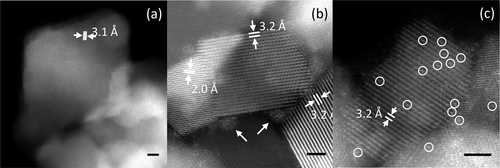A hallmark of our studies is that we explore systems of diverse form, doing so with an interest in defining novel mechanisms for preparing useful materials structures—whether nanoscale or more macroscopic—from solid, molecular, and other precursors. We integrate these efforts with a larger set of research interests directed at the development of novel methods of micro/nanoscale fabrication and molecular patterning, with an overarching interest to provide new capabilities for technology in areas as diverse as: light weight, flexible, and other novel form factor electronics; photovoltaic energy systems; advanced lighting; optics; batteries, fuel cells, and other electrochemical energy systems; actuators; chemical sensors; and bioanalytical arrays and scaffolds. The materials chemistry relevant to this work is therefore far ranging, spanning metals, semiconductors, polymers, ceramics, biological materials, and ultimately cells. These studies involve many points of collaborative interactions with our colleagues here and at other institutions.
Luminescent solar concentrators

Luminescent solar concentrators (LSCs) are luminophore embedded waveguides capable of collecting sunlight across a wide area and concentrating it onto smaller cells for energy conversion. Our lab is developing strategies to achieve world-record concentrators with microcell photovoltaics. We are also devising synthetic and post-synthetic methodologies for obtaining bright, near infrared emissive heterostructure quantum dots with a specific interest to incorporate them in LSCs integrated with Si microcells.
Single atom catalysts

Single atom catalysts (SACs) have shown high activity and selectivity in a growing number of chemical reactions. We seek to unveil the structure-property relationships that dictate catalytic activity while designing synthetic approaches for obtaining SACs. Recently, we explored the atomic structure and electronic properties of SACs and investigated the local structure of Pt environments using single atom Pt on nanosized CeO2 as a model system.
Building integrated technologies

Self-powered photoelectrochromic (PEC) windows are a self-powered, smart window technology for dynamic light and heat management in buildings and automotive environments with the potential to replace existing, externally powered electrochromic systems. We have integrated Si solar microcells that are small enough to be visually transparent and thin enough for integration into flexible PEC devices with high transmission modulation under rapid switching times at unprecedented EC:PV areal ratios.
3-D printable soft matter

We use 3-D printing to prepare micro-scaffolds for biological and actuation applications. We optimize polymer and nanocomposite blends for multiple printing functions. With new functional polymer-based ink, we can produce complicated structures that are responsive to external stimuli, deliver molecules, and promotes cell proliferation.
